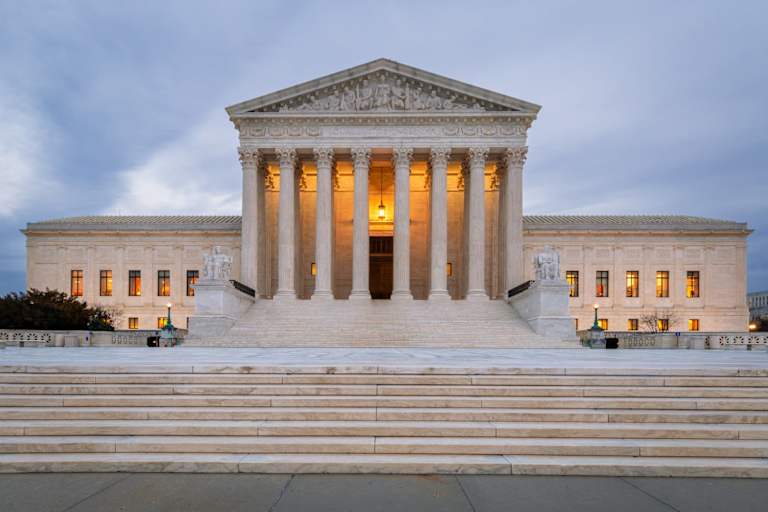How Will the End of Affirmative Action Impact Black and Latino/a Students?
- Affirmative action reduces discrimination in educational and employment settings.
- Affirmative action programs and policies have played a critical role in diversifying higher education.
- The Supreme Court ended college admissions practices that consider applicant race.
- Affirmative action’s end will negatively and disproportionately impact Black and Latino/a students.
This year, the Supreme Court ended affirmative action — policies that reduce or seek to remove discrimination in education and employment settings — in college admissions.
Affirmative action has caused an increase in college diversity nationwide. Colleges and universities admitted higher numbers of Black and Latino/a students with the onset of affirmative action. Following the Supreme Court’s reversal of affirmative action, we consider the potential effects on Black and Latino/a students.
Janelle Wong, a professor of Asian American studies at the University of Maryland, College Park, shares her views on affirmative action and the impact the Supreme Court rulings could have on students of color, specifically Black and Latino/a students.
What Is Affirmative Action?
Professor Wong describes affirmative action in the context of higher education as “the consideration of race as one of many, many other factors in the admissions process.” She goes on to explain that “race can never be the primary factor, and it can never be the only factor in the evaluation of an application.”
Affirmative action policies intend to remove discrimination against applicants in educational programs and employment opportunities. In college admissions, affirmative action policies can mean increased consideration for viable applicants who are women and people of color.
As Professor Wong notes, “It’s important to discuss what affirmative action ‘is not’ as well.” Since its first use in legal documents in 1961, affirmative action policies have expanded to include women, racial minorities, and people with disabilities. However, over time these policies have also excluded quota requirements and point systems.
“The legal justifications for the consideration of race in admissions have changed drastically over time,” Professor Wong states. “Originally, the consideration of race in admissions was justified as a means of addressing past and present racial discrimination. Over time, however, that justification was rejected.”
“As a result of legal challenges conservative activists have made over the past 40 years, affirmative action policies have become more and more restricted over time,” Professor Wong further explains.
How Affirmative Action Impacts Students of Color
Affirmative action has played a critical role in diversifying higher education. “Perhaps more critically,” Professor Wong expresses, “affirmative action increases access for students who have faced unfair barriers to education due to racial discrimination and racial segregation.”
In 1970, before affirmative action policies became rooted in college admissions, white students made up 91% of college enrollment. By 2020, the percentage of white college students dropped to 50%. According to this recent data, Black students account for about 12% of college enrollment, and Hispanic students account for about 20% of enrollment. Black and Hispanic or Latino/a people make up 13.6% and 18.9% of the U.S. population, respectively
According to a 2013 University of Washington study, admission of students of color declined significantly at schools located in states that limit or ban affirmative action practices.
Students of color, particularly Black and Latino/a students, remain underserved in college admissions. For example, enrollment disparities at state universities show lower percentages of Black college students than Black student high school graduates.
U.S. Supreme Court Strikes Down Affirmative Action
The Supreme Court ruled against using race as an inclusive component in college admissions on June 29, 2023. Also called race-conscious admissions policies, affirmative action has been challenged by opponents since its inception.
“In past cases (Fisher v. Texas), the conservative argument has been that race-conscious admissions discriminate against white students,” Professor Wong states. The cases on this year’s Supreme Court docket are a bit different.
The Supreme Court heard two cases, one involving Harvard and the other UNC-Chapel Hill. Both cases claimed that affirmative action unlawfully discriminates against Asian Americans
This ban on affirmative action will disproportionately impact students of color, particularly Black and Latino/a students.
What Does the End of Affirmative Action Mean?
“Eliminating race-conscious admissions would decimate the numbers of certain students of color, especially Black students, at Harvard,” according to documentation filed with the Supreme Court.
Ending affirmative action decreases the need for race-conscious admissions policies nationwide. Institutes of higher education would have no legal obligation to consider information about student identities such as race, ethnicity, or gender. Without these requirements to improve inclusivity in place, a decline in diverse student populations is expected.
“Analyses of a ban instituted in 1996 on race-conscious policies in California are particularly enlightening because we can see the real-world effects of ending affirmative action on access to education and even wages on different groups of students of color,” says Professor Wong.
Wong explains, “Importantly, ending affirmative action at public colleges in California led to negative consequences in terms of both enrollment and wages for Black and Latinx students.”
The argument that white and Asian American students are negatively impacted by affirmative action was one core component of the upcoming Supreme Court hearing. However, academics and experts believe that affirmative action does not negatively impact enrollment for white or Asian American students. Additionally, “ending affirmative action does not lead to significant advantages for white and American students,” Wong advises.
“Social science research shows that affirmative action benefits all students because a more diverse learning environment is linked to improved learning outcomes,” states Professor Wong.
She further explains, “Today, the only viable legal justification for the consideration of race is the ‘diversity rationale.’ This rationale focuses on the benefits of racial diversity for students of all racial backgrounds in terms of learning outcomes and leadership development.”
How Colleges Are Responding
“Colleges largely value diversity in their admissions practices. Because they can no longer consider race as a factor in admissions, they will likely take other routes to prevent diversity from plummeting at their institutions.
First, students can still include their race in their college essays if it tells the story of how it impacts their experiences. This means colleges will still know about your race — you just have to tell them.
Also, colleges will likely switch up how they recruit students. Focusing on a wide range of communities could promote diversity in college’s applicant pools.
Some colleges, including Duke University and UNC, are already offering free tuition to students whose families make below a certain income. This helps allow for more educational equity, even without affirmative action policies in place.
Frequently Asked Questions About Affirmative Action
What impact was affirmative action designed to have?
Affirmative action was designed to decrease discrimination based on race and gender in the educational and employment sectors. Policies required institutions to admit or hire quotas of individuals of certain racial ethnicities to increase representation. Over time these policies removed quota requirements.
Is affirmative action constitutional?
The Supreme Court ruled on June 29, 2023 that affirmative action policies in college admissions are unconstitutional. However, the debate over affirmative action policies began in the 1970s.
Why is affirmative action important?
Affirmative action helps individuals receive equitable access to educational and employment opportunities. The policies in support of affirmative action bring awareness and legal obligation to equity and fairness of admission and hiring. Affirmative action is important because it improves opportunities for racial and other minority groups to attend college, obtain jobs, and advance in career and educational pursuits.
With Contributions By:

Janelle Wong is a Professor of Asian American Studies at the University of Maryland, College Park.





